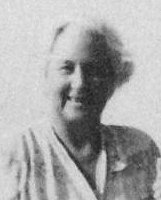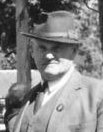View entry
Name: BARCLAY, Hugh Bromfield OBE, MC (Capt.)


Birth Date: 5 May 1895 Coatbridge
Death Date: 7 Nov 1994 Nakuru
First Date: 1919
Last Date: 1994
Profession: Farmer
Area: 1922 Menegai, Nakuru district, 1925 Rongai
Married: In Kenya 1930 Patricia Frances 'Patsy' Kilkelly b. 22 Mar 1903 Godstone, d. 1973 Nakuru
Children: Hugh Petre (11 Dec 1934 Nakuru-23 May 2021); Barbie (Allen)
Book Reference: EAWL, Midday Sun, KAD, Red 25, Red 31, Hut, Red 22, SS, Foster, Cran, Rift Valley, Barnes
General Information:
Midday Sun - 'In a sense, Hugh's farming career had started in the trenches of WW1 where he had been badly gassed, and subsequently advised to seek a drier air than Britain's for the sake of his lungs. ........... proved most successful in achieving his aims - not great wealth or personal fame, but the creation of a complex enterprise ticking over smoothly and supported by a contented human community, and which he was able, many years later, to pass on to his son. Hugh and Patsy had a reputation for looking after their labour force, and the families thereof, especially well. For many years holidays overseas were ruled out, but when conditions eased and Hugh and Patsy were able to go 'home' now and again, he pursued the small game of Britain, birds and fish, the big game on his doorstep having mainly been ignored; he was too busy, and later became a conservationist. He specialised in dairying, was the first to import Friesians of Dutch rather than British descent, and became one of the country's foremost breeders. And, on his bit of the 'plain of the rhinoceros without any milk', as the Masai had called this part of the Njoro levels, he bred Kenya's first 2000 gallon cow.
Soldier Settlement Scheme after WW1 - Class B - H.B. Barclay, MC, Woodside, St. Michaels, Tenterden, Kent - Farm 1058
An Appreciation - Hugh Bromfield Barclay has died on November 7 aged 99 in Kenya. He was the last survivor of the soldier-settlers who went to Kenya from the Great War. Hugh Barclay was a successful and well-liked farmer who did a lot to build up mixed farming in Kenya. He served on many of the farming boards which ran the industry in the colonial era, and received an OBE in 1961 for services to agriculture. At one time he was the leading breeder of Frieslands in E. Africa and imported bulls from all over the world in the 30s to introduce new blood lines. In the late 20s he was instrumental, with Prof. Orr of Aberdeen University, in identifying and solving the cobalt deficiency problem that exists in the Nakuru area of the Rift Valley. Before this he had to walk his work oxen down to Rongai every 6 weeks from Menengai or the deficiency would kill them. He became a large landowner in the Rift Valley and devoted his life to wheat and cattle farming. He had very many friends and was always happy to help people with their problems - particularly in farming. He was looked upon as aman of utmost integrity and was respected for his hard work and leadership. He was a steadying influence in the lead up to independence due to his faith in the country's future, and his good relations with very many of the indigenous people. Hugh Barclay was born in Lanarkshire, Scotland in May 1895. When he was six, his father died, and he was brought up in Cumberland where his mother came from. He went to school in Edinburgh, and then to Edinburgh University. However, he left there after a year, when the Great War started, and served in the Gunners for the duration of the war. He was at Gallipoli and then the Sinai Peninsula before going to France, where he soldiered till the armistice. He was wounded in the shoulder at the Somme and gassed at Paschendale and Ypres. He was awarded the MC in 1917. He came to Kenya in 1919, having decided not to continue at Edinburgh University and started farming at Rongai, Rift Valley. He remained in that area for the rest of his life, living at Menengai, but owning land in various parts of the district. Although selling most of his land just before Independence he continued to live at Menengai with his son until quite recently and then at Nairobi. Until 1993 he used to swim regularly, maintaining the fitness he had had all his life. After he stopped farming activity he devoted a lot of his time to charitable works. A remarkable and unique man who will be sadly missed by many worldwide. In 1930 he married Patricia Kilkelly, who predeceased him, by whom he had a son and two daughters.
Cran - Captain Hugh Barclay was an original soldier-settler, who had come to Kenya after serving with some distinction in the Great War. Bluff and hearty, he ran a large herd of Friesians on his farm, Crater Estates, at Menengai.
Rift Valley - Member of the Rift Valley Sports Club - Jan 1929 - Elected - 30 Dec 1922 - H.B. Barclay
Nakuru North cemetery - Hugh Bromfield Barclay born May 1895, died Nov 1994 and his wife Patricia Frances Barclay of Menengai born March 1903, died May 1973
Anne Scott, A Nice Place to Live, 1991: One neighbour who gave me much advice was Hugh Barclay, who lived about ten miles away, between Rongai and Nakuru. As a young man he had served in the First World War in the Gunners. After the war he had come to Kenya to work on a coffee farm, but decided he liked stock and mixed farming better and so he had bought land near us. He married an Irish girl, Patsy Kilkelly, whose father had been a doctor with the Grenadier Guards, and had been present at the Battle of Omdurman. The land they bought was waterless and cobalt-deficient, and consisted mainly of lava ash, but in time he had converted it into a very productive farm, growing good crops of maize and wheat. He had one of the best Friesian herds in the country. Hugh was always ready to help me over problems.
